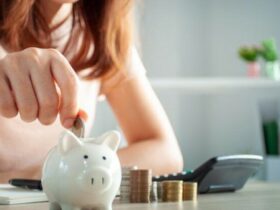Title: What is a Moodboard? Functions, and How to Make It
For You. Get More Information from our site @iwanrj.com free.
A moodboard is a collage that combines various visual elements that play an important role for designers in creating attractive works that also match the desired vision. Usually used in the creative industries to illustrate a concept or idea in a project or to gather aesthetically inspiring visual ideas.
Moodboard is a creative tool that is often used in various projects, especially in graphic design, interior design, fashion, and architecture projects.
Moodboards play a very important role for designers in creating interesting work, also in accordance with the desired vision.
Maybe for some people who are new to the world of design, this term still sounds foreign. Therefore, Hosteko will discuss in full what is a moodboard? What are the functions and how to make an effective and attractive moodboard.
Understanding Moodboards
moodboards is media containing reference materials which will later be used as a designer’s guide in creating content or work. For those of you who work in the creative field, you must be familiar with the existence of moodboards in the scope of work.
In short, a moodboard is a detailed description of the work that will be made, starting from the theme, references, colors, shapes, decorations, and various other things according to your wishes.
In general, moodboards are both casual and flexible, depending on the theme of the content or project you want to work on. The clearer the data and materials included in the moodboard, the easier the content creation process will be.
For a brand, the moodboard has an important role because it can affect the brand image that will be formed later. One populer brand that can be used as an example in terms of moodboards is McDonald’s.
This one fast food restaurant has a yellow and red color palette that is dominantly used, both in the logo and in every design made to date. The yellow color can describe happiness and warmth, while the red color means enthusiasm and can stimulate the body to be active.
The combination of these two colors in the F&B (Food & Beverages) or culinary world is able to increase appetite and make consumers feel hungry. So, it can be concluded that a moodboard is an important element to support content or business to be better known by the audience.
Benefits of Moodboards
A moodboard is a guide that designers can use in developing and executing the business project they want. This is of course related to the initial idea of the project that will be developed, so it is important to make this moodboard truly usable.
Based on the above understanding, it is clear that moodboards are an important part of a project, considering that designers will use them to explain and convince clients of projects that are being or will be developed in the future.
The main benefit of moodboards is to help clients overcome obstacles when it comes to interpreting their ideas in a visual way. This means that moodboards will be used to describe these ideas, making it easier to turn them into a more complete design.
The designer will listen to the ideas that the client wants to implement in a visual way, then confirm the changes made to the client back through the moodboard.
Not only that, moodboards made using an application will also make it easier for designers to simplify the design process itself, including if it turns out that the client wants a revision of the design being worked on. This process certainly will not take a long time, because it is not done manually.
The benefits of the moodboard itself are not only for the designers’ clients, but also for the work team involved in it. The moodboard will make it easier for the team to create design concepts and in the creative process itself.
Moodboard function
Moodboards are tools often used by creative professionals to help them develop visual-related concepts and ideas. The moodboard function is as follows:
1. Help gather inspiration
Very useful for creative professionals in gathering inspiration from various sources, such as images, colors, textures, and other visual elements.
Utilizing these visual elements can help trigger new creative ideas and develop the desired concept.
In addition, it can be a very effective tool in visualizing creative visions and goals, so that it can help creative industry players create unique and innovative works.
2. Visualize the concept
Helping to visualize their concepts in the form of images and other visual elements so that they can easily share their ideas with teams or clients.
3. Help unite ideas
Helps in bringing together ideas from various team members or clients in one place that is easily accessible and visible to everyone.
By using it, the creative team can easily share their ideas and visualize the desired vision effectively.
In this regard, moodboards serve as a useful collaboration tool to ensure that all team members or clients share the same understanding and are actively involved in the creative process. Thus, the final results produced will be in accordance with the desired vision and goals.
4. Maintain visual consistency
Helps maintain visual consistency in a project, especially when there are multiple team members or clients involved in the project.
In this respect, they serve as a useful tool for ensuring that all visual elements used in a project have the necessary fit and similarity.
Thus, it can assist team members or clients in achieving the desired visual consistency goals and produce work that is professional and coherent overall.
5. Clarify the vision of the project
Helps clarify the project vision by providing a visual representation of how the concept or idea will be presented in the desired final form.
6. Increase user engagement
Can help increase user engagement with websites or other projects by providing an engaging and inspiring visual appearance.
7. Facilitate the production process
Help ease production processes by providing clear visual guidance for team members or clients to develop ideas and make visual-related decisions.
In this context, they can serve as a useful guide in guiding decision making and ensuring that the end result meets desired expectations.
By leveraging them, creative teams can save time and avoid ineffectiveness in the production process by not having to consider different ideas separately.
Purpose of Creating a Moodboard
Moodboards are used to convey the emotion of an idea. Some of the purposes of moodboards are as follows:
- To communicate the process of building a clear design story that you want to use.
- Moodboards help you express the vision you have for your project.
- Communicating visual ideas to others can be very complex, so while moodboards aim to be efficient visual communication tools, moodboards are a great starting point for getting things done.
- Help you organize and focus your ideas to define your project.
How to Make a Moodboard
Here are some ways to make a moodboard as described below:
1. Determine the theme and goals
Before starting construction, first determine the theme and goals of the project to be realized. This will help you gather relevant visual elements and set the creative direction for the project.
2. Gather inspiration
Gather inspiration that is relevant to the project’s theme and goals, such as images, colors, textures, and other visual elements. Inspiration can come from various sources, such as the internet, books, magazines, or personal experience.
3. Assemble the visual elements
Arrange the visual elements that have been collected into a moodboard. Arrange these elements in an attractive and easy-to-understand way. You can organize visual elements chronologically, by theme, or according to other criteria.
4. Create a description for each visual element
Create a description for each visual element. The description can include information such as the source, type, or criteria relevant to the element. This will help you remember or share information with others involved in the project.
5. Use the right tools
You can use graphic design software such as Adobe Photoshop or Canva, or use specialized applications such as Milanote or Miro. Choose the tool that suits your needs and make sure you understand how to use it.
6. Evaluation
After finishing making the moodboard, evaluate and criticize the results again. Reconsider whether the moodboard includes all the required visual elements, whether the project theme and goals are well represented, and whether the arrangement of visual elements meets the desired standards.
In the process of making it, make sure you continue to innovate and be open to new ideas. By following the methods above, you can create an effective moodboard and help ease your creative process.
Tips for Making a Moodboard
Here are some short tips that you need to know.
1. Set goals and themes
Before you start, decide on the purpose and theme of the moodboard. Whether to develop an idea, visualize a concept, or inspire a creative process. Choose a theme that is specific and relevant to your goals to focus more on gathering visual elements.
2. Gather the visual elements
Gather a variety of visual elements that fit the theme and purpose, such as images, colors, patterns, textures, and other visual elements. You can use sources such as the internet, books, magazines, or personal experience.
3. Arrange the visual elements aesthetically
Arrange the elements in an aesthetic and attractive way. Consider the arrangement of colors, proportions and textures to make it look balanced and easy to understand. You can use graphic design software or special applications to help you arrange visual elements.
4. Not too many visual elements
Avoid too many visual elements on the moodboard. Choose the most relevant and powerful visual elements to achieve the goal and theme of the moodboard.
5. Use the moodboard as a reference
The thing to do after finishing making moodboards is to use them as a reference to develop ideas and inspiration in the creative process. Because it can help maintain focus on the desired theme and vision.














